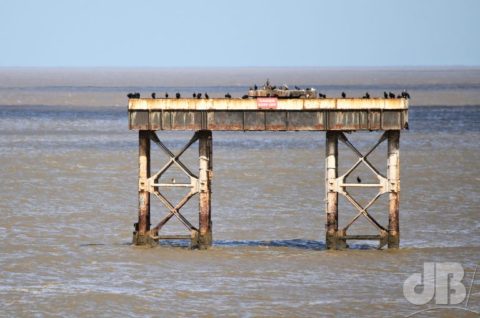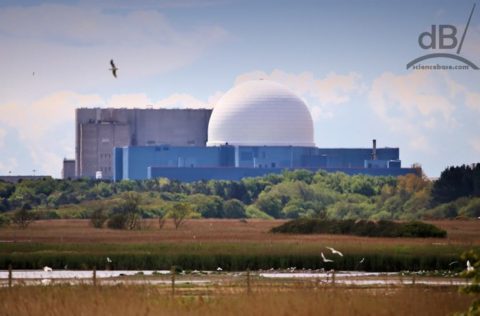TL:DR – One of the natural side effects of planting a nuclear power station on the coast.
This platform was one of two “water rigs” one of which was used to draw cold seawater into Sizewell A nuclear power station; two magnox reactors operated there from 1966 to 2006. The spent “coolant” having generated its superheated steam to drive the turbines to drive the generators was then released back into the sea at the second platform, the one closer to the shore, pictured below.

Because the discharged water was at a slightly higher temperature than the sea, an oceanic microclimate formed here, which led to greater numbers of fish and birds utilising the thermal boom.
Most of the machinery and components were removed during decommissioning of the reactor, but birds such as Cormorants and numerous gull species still find the platforms useful as roosting sites. There was a time when Kittiwakes nested on the platforms, their presence led to delays in removing hazardous components during decommissioning. Ultimately, these two platforms will be removed. Shipping buoys are already in place to warn of sandbanks along this stretch of coast, so the platforms no longer have warning lights for that purpose as they once did.
Sizewell B, which you would recognise as the big white dome is a pressurised water reactor; the only commercial PWR in the UK. Sizewell C is on hold until “issues” and “concerns” are resolved. One can imagine that palms will be greased at some point and the public protest against it will be forgotten by all but those who live in the area.

You can take a look at various photos from our recent trip to Thorpeness, Aldeburgh, and Sizewell here.
Incidentally, fans of musician Thomas Dolby will likely know Sizewell A as the setting of his music video for the song Europa and The Pirate Twins.